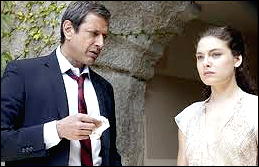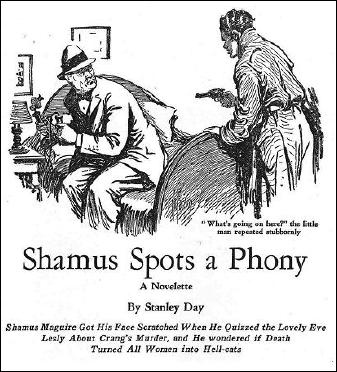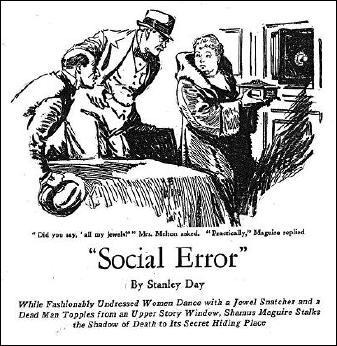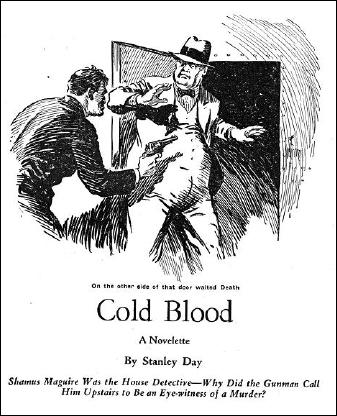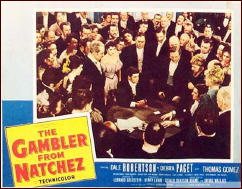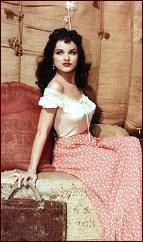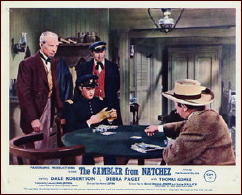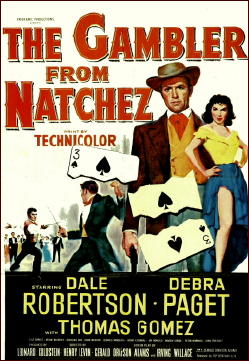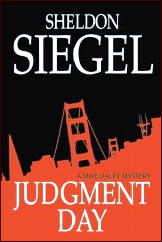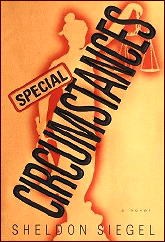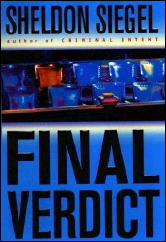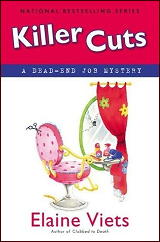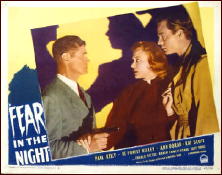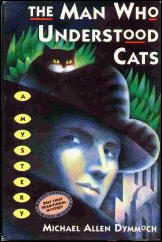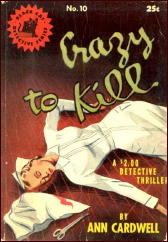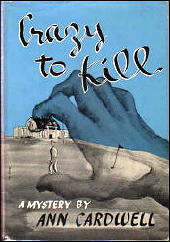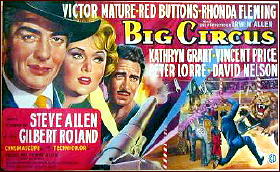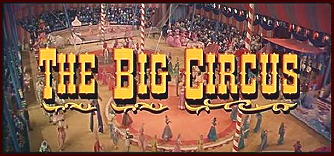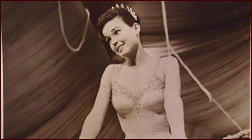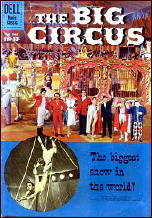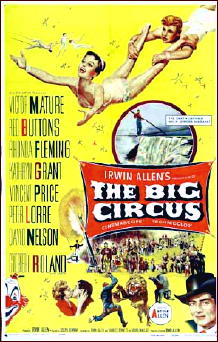THE SERIES CHARACTERS FROM
DETECTIVE FICTION WEEKLY
by MONTE HERRIDGE
#1. SHAMUS MAGUIRE, by Stanley Day.
The “Shamus Maguire” stories by Stanley Day were a short series of eleven stories (some short stories and some novelette length) published in Detective Fiction Weekly from 1932 to 1934. There may be more.
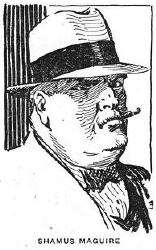
The series involves the exploits of a hotel detective of indeterminate age, although he is noted as being a former policeman of 30 years service. Maguire retired on a pension four years before (according to his statement in the last story in the series) and became a hotel detective in the super-exclusive Hotel Paragon “to preserve himself from boredom.â€
His service time “had given him an air of authority that was no respecter of persons.†(The Glass Eye of the Corpse) He weighs 240 pounds (260 in some stories), a bit overweight, and smokes Little Policeman cigars. He lives in a house elsewhere, and doesn’t room in the hotel.
Hank Shaw is the assistant manager of the hotel, and gives orders to Maguire. He also likes to play jokes on Maguire, but in one case this backfired on him when a murder took place.
Maguire wasn’t concerned with the reputation of the hotel or whether the guests would flee if a scandal broke out. “He was concerned entirely with wrongdoing. And he possessed an unshakable belief that crime in the Hotel Paragon was his affair and his only.†(The Glass Eye of the Corpse)
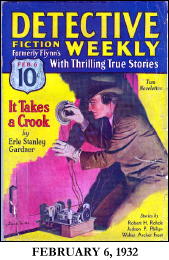
When the city police got involved in the hotel on investigations, Maguire would interfere and if possible mislead them. Maguire’s “contention that he was capable of doing the hotel’s police work single-handed had a firm basis in fact.†(The Glass Eye of the Corpse)
Flynn and Schultz, two police detective-sergeants, also appear in the stories whenever a police investigation is called for. Maguire usually outsmarts them easily. Each story, it seems, is a ready-made conflict between Maguire and the police, and a kind of race to see who will solves the crime or crimes.
“Error in Time†is the first story in the series, and Shamus Maguire is actively involved in working on a case of kidnapping. One of the wealthy guests in the hotel has gone missing, and Maguire was assaulted by the kidnappers seeking his hotel keys. He recognizes one of the kidnappers, and sets out to track them down. His broken wristwatch provides the key clue.
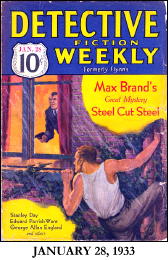
“The Glass Eye of the Corpse,†the second story in the series, involves the murder of a guest in the hotel lobby. No one saw the murder, but the victim had recently told the assistant manager he thought he had seen a murder victim upstairs in one of the rooms. It takes a bit of work for Maguire to piece together what really happened and have the police arrest the guilty.
“Murder by the Window†is the third story. This involves a series of supposed suicides from the hotel windows by guests who have plenty of money. Maguire and the police are certain it is murder, but are not sure how the crimes were arranged. Maguire figures out the solution and puts it to the test with a fake guest and some money. As usual, Flynn and Schultz of the police are on hand for the investigation.
“Shamus Adds Them Up†is an interesting story. Thirty-seven pairs of pants have been stolen from occupants of the fifteenth floor of the hotel, and Shamus Maguire is puzzled as to the reasons. Money and valuables were left behind. Maguire suspects that the real reason may have something to do with the British lord and his relatives, and finally figures out the motive behind the crimes.
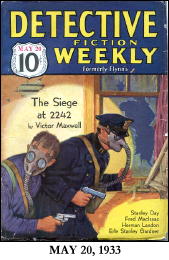
“Kindergarten Stuff†is a simple case for Shamus Maguire. A millionaire in the hotel seems to have been seriously injured by a fall. He is taken to the hospital where he later dies. His secretary seems to have been first on the scene with Maguire opening the hotel room door to discover the injured man. Maguire spends the rest of the story manipulating the secretary and the situation until he gets the secretary to sign a confession that he injured the millionaire. The title comes from Maguire’s statement to the secretary at the end: “It was simple as hell — kindergarten stuff for any cop.â€
“Dead Man’s Eyes†is another good entry in the series. Shamus Maguire investigates a supposed suicide by hanging in one of the hotel rooms, and decides it was really murder. He is generous enough to tell the police detectives his idea, which they take in another direction guaranteed not to solve the case. Meanwhile, Maguire figures out the reason for the murder and who the victim really is.
“Shamus Spots a Phony†is a better than usual entry in the Shamus Maguire series. This particular story is a good example of the kind of puzzling mysteries Maguire runs across, and it takes him a long time to figure out the solution. As usual in this series, he has to solve the crime despite the interference of two of the local police detectives.
“Other People’s Business†is a story that keeps Maguire on his toes, trying to get the better of a well-known professional criminal named Harry the Boss. An expensive oil painting is at stake here. It is on exhibition in the hotel, and Flynn and Schultz as usual are on the scene. When the painting is stolen, Maguire enjoys the discomfiture of the two policemen. However, Maguire figures out where the painting is hidden and prevents the criminals from escaping the hotel with it.
“A Doctor in the House†involves a kidnapping and a murder, as well as various goings on that seem to mystify the two police detectives. Shamus Maguire soon gets a handle on the entire affair and very quickly the crooks are behind bars.
“Social Error” involves a jewel theft and a murder which seems like it could be a suicide. The jewel theft is of the least valuable piece of jewelry in the ball-room full of rich people at the Hotel Paragon. Shamus Maguire solves the problem and makes the two detectives look especially foolish.
“Cold Blood†is the last story in the series, and is of novelette length. Maguire becomes an involuntary witness to a murder in the hotel, and sets out to discover the real story behind it. Maguire sees certain discrepancies in the murder scene, and this sets him off on his investigation. He is assisted in this case by an insurance investigator named Culver, who winds up saving Maguire’s life during the investigation. A better story than some of the others in the series.
This is an above average series, with very good stories. There is an element of humor in the stories, with Shamus Maguire and his interactions with the two police detective-sergeants. There were many series in DFW of similar attraction to the Shamus Maguire series, and these series gave the magazine its distinctive personality.
The Shamus Maguire series by Stanley Day:
Error in Time February 6, 1932
The Glass Eye of the Corpse March 12, 1932
Murder by the Window December 24, 1932
Shamus Adds Them Up January 28, 1933
Kindergarten Stuff February 18, 1933
Dead Man’s Eyes April 15, 1933
Shamus Spots a Phony May 20, 1933
Other People’s Business September 2, 1933
A Doctor in the House December 30, 1933
“Social Error” January 20, 1934
Cold Blood October 6, 1934

